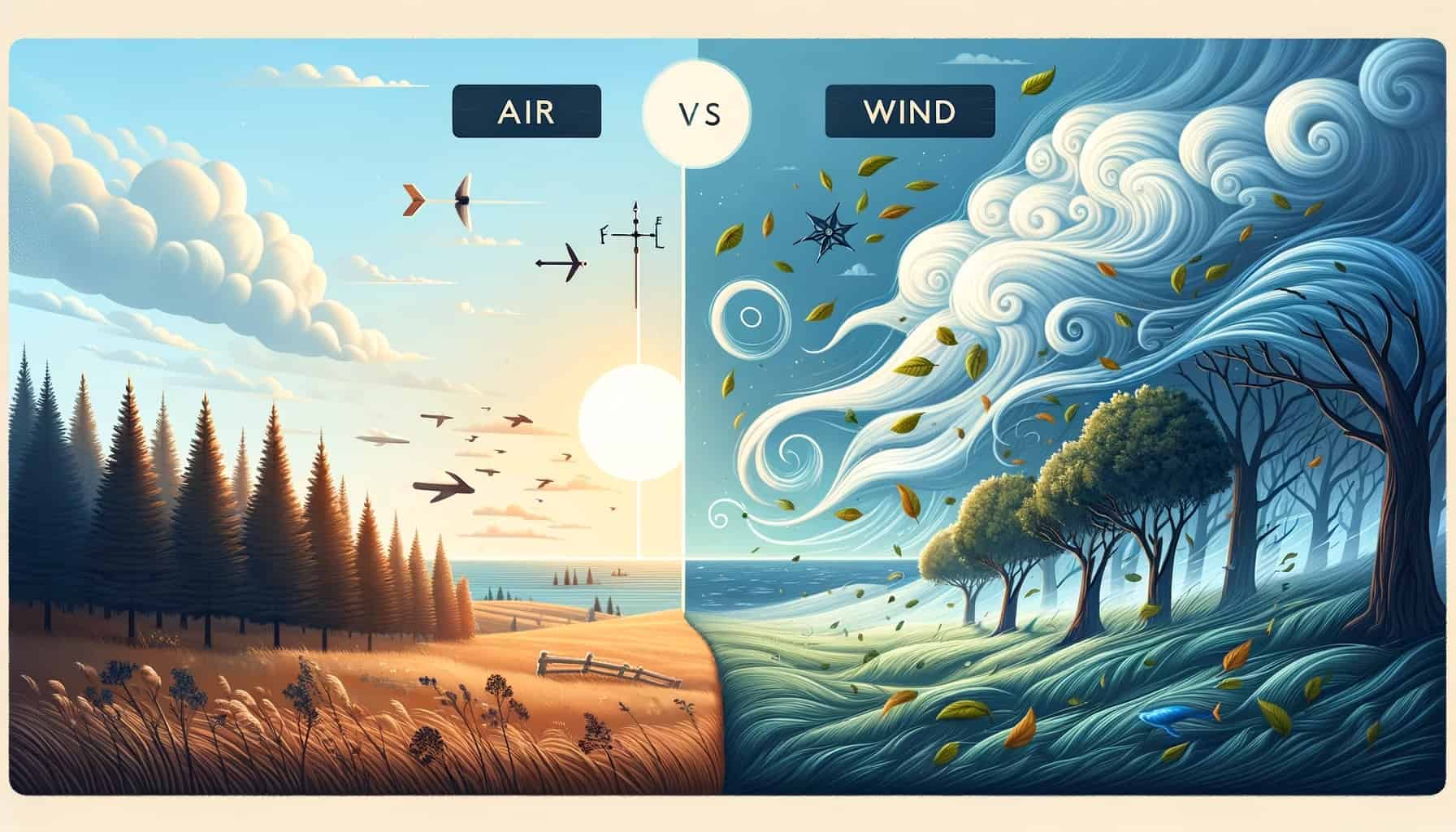Difference between air and wind
by Yogi P - November 12, 2023
Difference Between Air and Wind : Understanding the Gentle Breeze and the Breath of Life
In the vast lexicon of our natural world, two terms, ‘air’ and ‘wind,’ are often used in daily conversation, sometimes interchangeably. However, they represent distinct concepts within the study of Earth’s atmosphere and our environmental experience.
This article aims to clarify the difference between air and wind, unpacking their definitions, characteristics, and roles in our ecosystem.
Air
Air is the invisible mixture of gases that surrounds the Earth and is vital for the survival of most life forms. It is composed primarily of nitrogen (about 78%) and oxygen (about 21%), with small amounts of other gases such as carbon dioxide, argon, and trace levels of other gases. Air also contains varying amounts of water vapor.
Key Aspects of Air:
- Composition: A stable mixture of gases, primarily nitrogen and oxygen.
- Availability: Present everywhere around the Earth’s surface, filling the atmosphere.
- Importance: Essential for breathing, photosynthesis, and various other life processes.
- Stability: Its composition remains relatively constant, except for slight variations in water vapor and pollutants.
Wind
Wind, in contrast, is the movement of air from an area of high pressure to an area of low pressure. Wind is caused by the uneven heating of the Earth’s surface by the sun, which creates temperature and pressure differences in the air.
Key Characteristics of Wind:
- Movement: It is essentially air in motion.
- Causes: Created by atmospheric pressure differences, temperature variations, and the rotation of the Earth.
- Variability: Can vary in speed and direction.
- Perception: Can be ‘felt’ and ‘measured’ unlike air.

Difference between wind and air
Table Summarizing the Differences Between Air and Wind:
| Aspect | Air | Wind |
|---|---|---|
| Definition | The mixture of gases that constitutes the Earth’s atmosphere. | The movement of air caused by atmospheric pressure differences. |
| Composition | Consistent mix of gases, mainly nitrogen and oxygen. | The same as air, but in motion. |
| Presence | Omnipresent, surrounding the Earth. | Occurs where there are differences in atmospheric pressure. |
| Sensory Perception | Cannot be seen or felt directly but is vital for life. | Can be felt when in motion and seen indirectly by the movement of objects. |
The Role of Air and Wind in the Environment
Air serves as the baseline condition of the Earth’s atmosphere; it is the medium through which wind moves. Wind plays a significant role in weather patterns and the Earth’s climate. It helps to distribute heat and moisture around the globe and is a critical component of weather systems.
Understanding Through Everyday Experience
To better understand the distinction between air and wind, consider this daily experience: when you step outside, you are surrounded by air. You breathe it in, and it fills your lungs, but you do not feel it moving or exerting force unless there is wind.

Difference between air and wind
The Impact on Human Activities
Wind has a direct impact on human activities; it powers sailboats, windmills, and modern wind turbines that generate electricity. Air’s impact is more subtle but equally profound, providing the oxygen we breathe and influencing the weather and climate that affects our daily lives.
Conclusion
In essence, air is the ever-present mixture of gases that envelops us, a silent sustenance of life, while wind is the dynamic force that we feel brushing against our skin, bending trees, and powering turbines. Both are crucial to sustaining ecological systems and human civilization, yet they serve distinctly different roles in the tapestry of our natural world.
Understanding the difference between air and wind not only enriches our knowledge but also enhances our appreciation of the subtle and powerful forces that shape our daily lives and the environment we depend on.










